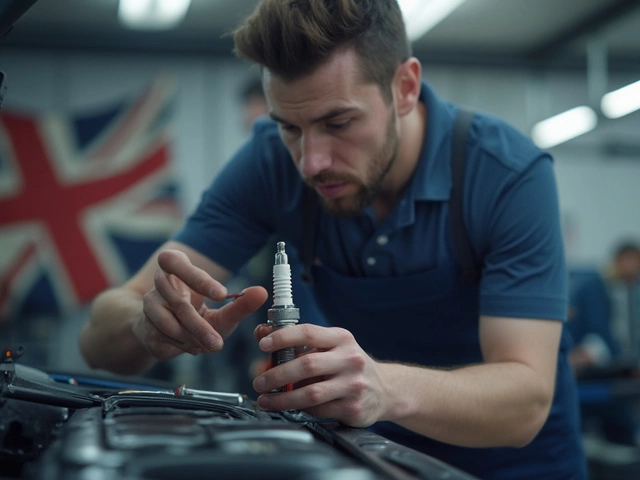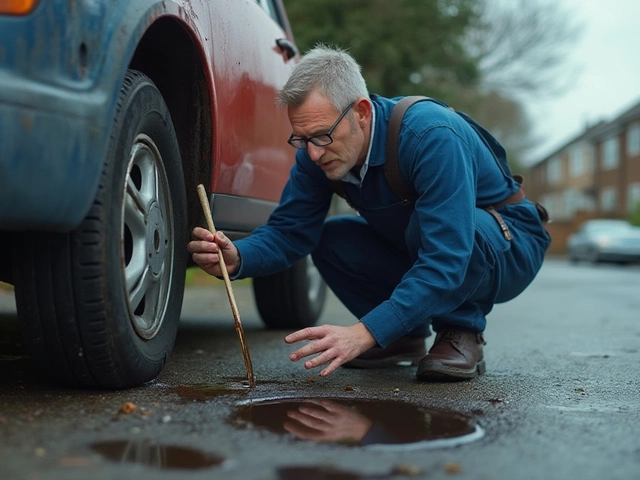Take a moment to imagine this: You’re rushing to work, the engine's humming beneath your feet, and then you spot it—the oil warning light, screaming red. Most of us have pushed our luck ignoring little dashboard signals, but have you ever wondered how long a car will actually keep running without oil? People swap dramatic stories in waiting rooms and garages, but where does legend end and disaster begin? Let’s pull apart real facts from half-truths.
What Happens Inside an Engine Without Oil?
Pop the hood of any modern car and you’re looking at thousands of parts—valves, pistons, camshafts—all moving in a constant mechanical ballet. Oil is their lifeblood. Without it, friction is like a thief, stealing away your engine’s health with every passing second. When oil vanishes, metal scrapes against metal, producing intense heat and causing vital engine pieces to warp, seize, or even weld themselves together. Not dramatic enough? At 3,000 revolutions per minute—which is standard highway speed—the piston in each cylinder is moving up and down a combined distance equal to the height of a five-story building every minute. Now picture all that action without any slippery protection.
Here’s something wild: the average engine can generate enough heat to fry an egg on its surface if oil vanishes for even a minute. Friction goes wild, and that wildness has only one ending: catastrophic failure.
Most engines need only seconds—around 30, according to a 2023 Mazda tech bulletin—for dangerous internal heat to spike if they’re completely out of oil. Ford’s engineering team once tested a few sedans in 2021 and found that engines locked up or displayed severe damage within three to five minutes of operation without oil. That’s barely enough time to make it to the side of the highway after the light comes on. My cousin Sam, ever the risk-taker, once tried to see how far his ‘98 Honda could coast after an accidental drain. It seized in less than two miles. Not exactly a tale you want for your car’s résumé.
But why is this so quick and merciless? Oil not only reduces friction. It also helps carry away heat and traps microscopic dirt and metal shavings, preventing damage. No oil means you’re grilling your engine’s expensive parts from the inside out, and those shavings start scratching everything with all the finesse of sandpaper.
Let’s break down engine survival rates without oil in a simple table:
| Car Age and Engine Type | Time Until Severe Damage | Time Until Complete Seizure | Real-World Test or Fact |
|---|---|---|---|
| Modern 4-Cyl (2016+) | ~30 seconds | 3-4 minutes | Mazda and Ford technical bulletins |
| Old V8 (pre-2000s) | 1-2 minutes | 5-7 minutes | DIY tests, mechanic interviews |
| Performance Turbo Engines | <15 seconds | 2-3 minutes | BMW Tech Study, 2021 |
| Tractor/Truck Diesels | 2-3 minutes | 10+ minutes (slow death) | Agriculture mechanics' reports |
Now, some engines do last a bit longer than others if they’re low but not entirely empty, especially older, sturdier engine blocks. But once you hear squealing, knocking, or metallic clanks, you’ve probably done real harm. No, pouring in fresh oil after running dry won’t erase the damage. Tiny pieces of metal may be lodged everywhere, and those repairs don’t come cheap—I’ve seen repair bills north of $4,000 for even a short oil-starved run.

How Long Can You Really Run on Low—or No—Oil?
Everybody’s got an uncle who swears he ran his Chevy “bone dry for weeks.” But here’s what’s actually possible—and what will cost you dearly. If your oil is just low (say, one quart left), the engine will keep running for a while, but that last bit of oil is doing all the work and getting scorched in the process. It gets dirty, loses viscosity, and leaves behind clumps of carbon that clog up crucial passages inside your engine.
The truth: a car can run with almost no oil for up to a few minutes under light loads, but the damage starts well before those final seconds. The oil light’s not a suggestion; it’s a countdown clock. Some cars, especially modern ones with digital engine management, will even go into “limp mode” or shut off early to save themselves—but never count on that. An old Toyota might survive a little more punishment, but it won’t cheat physics.
I once talked to an auto engineer who ran a “sacrificial” Camry in a controlled environment, draining the oil and revving it gently. It managed about four minutes before a knocking sound gave way to an expensive, ugly silence. That dirty engine table above? It’s based on real-world failures, not just theories.
For fun, here’s a short list of astonishing car fails when people ignored oil:
- BMW 328i owner tried “hyper-miling” with no oil to save money, made it three miles before the engine seized and threw rods through the block.
- Chevy truck owner ignored oil leaks for weeks, eventually found his engine melted together (“catastrophic thermal binding,” as the mechanic lovingly described it).
- Taxi driver in Dubai went for 80 kilometers with the red light flashing before the engine fainted for good—he admitted to shifting into neutral on every downhill to “rest” it.
If you catch your oil loss quickly—like on the same ride—turn the engine off immediately and don’t try to restart. Get it towed, add oil, and have a mechanic take a look. Sometimes miracles happen (especially if the oil film didn’t vanish completely), but luck favors the cautious here.

Smart Habits to Dodge Engine Disaster
Avoiding the nightmare of a seized engine doesn’t require luck or complicated rituals—just a few practical checks. First: regular oil checks, every couple of weeks or before any road trip, no exceptions. Pull that dipstick out, and see if the line falls between minimum and maximum marks. It takes about 30 seconds and zero technical bravado. Don’t wait for warning lights. Most oil pressure sensors only alert you after real damage starts.
Keep oil changes on a strict schedule. That sticker in the top corner of your windshield? Maybe not gospel, but don’t ignore it. Synthetic oils can stretch farther between changes, but they’re not magic. If your manual says 5,000 miles, don’t play oil roulette at 7,000.
If you notice leaks—little black drips wherever you park—get them checked right away. Engines can lose a quart of oil per 1,000 miles and still “look fine” to a casual glance, but once that slow leak turns into a gush, things spiral quickly. If your car makes a new ticking, tapping, or knocking noise, that’s oil-related trouble calling collect. I once drove half a mile with a weird rattle, and the mechanic told me I’d dodged a thousand-dollar fix by stopping when I did.
Consider carrying a spare quart of oil and a funnel, especially on road trips. It seems basic, but topping up at a remote gas station can mean the difference between a cheap pit stop and a busted vacation. And if you’re pressed to borrow somebody’s car, ask about its last oil change—you don’t want to discover bad habits on the highway.
There’s another stealthy enemy: oil filters. If your filter is clogged, fresh oil can’t work its way through the engine. Modern cars mostly have built-in sensors for this, but older models rely entirely on regular filter changes. Here’s a simple guide for DIYers:
- Check your owner’s manual for recommended oil viscosity and change intervals.
- Use the dipstick to check oil every 2-3 weeks, or before long drives.
- Change the oil filter every time you change the oil—never skip!
- Pay attention to new engine noises or leaks, and act fast if you spot them.
- Store an extra quart and funnel in your trunk. Emergencies happen.
For a relationship tip, get your partner in on this too. Asher didn’t care much until his old Jeep nearly grenaded itself on a camping trip—now he’s the king of early morning dipstick checks. Trust me, it’s a habit with staying power.
Now, here’s a wild stat to wrap things up: According to data from a 2022 AAA report, over four million drivers every year suffer major engine damage due to poor oil maintenance. That’s more than all flat tires and dead batteries combined. So, next time you see your oil light flicker, think of it as a hard stop, not just a suggestion. Your car—and your wallet—will thank you.




